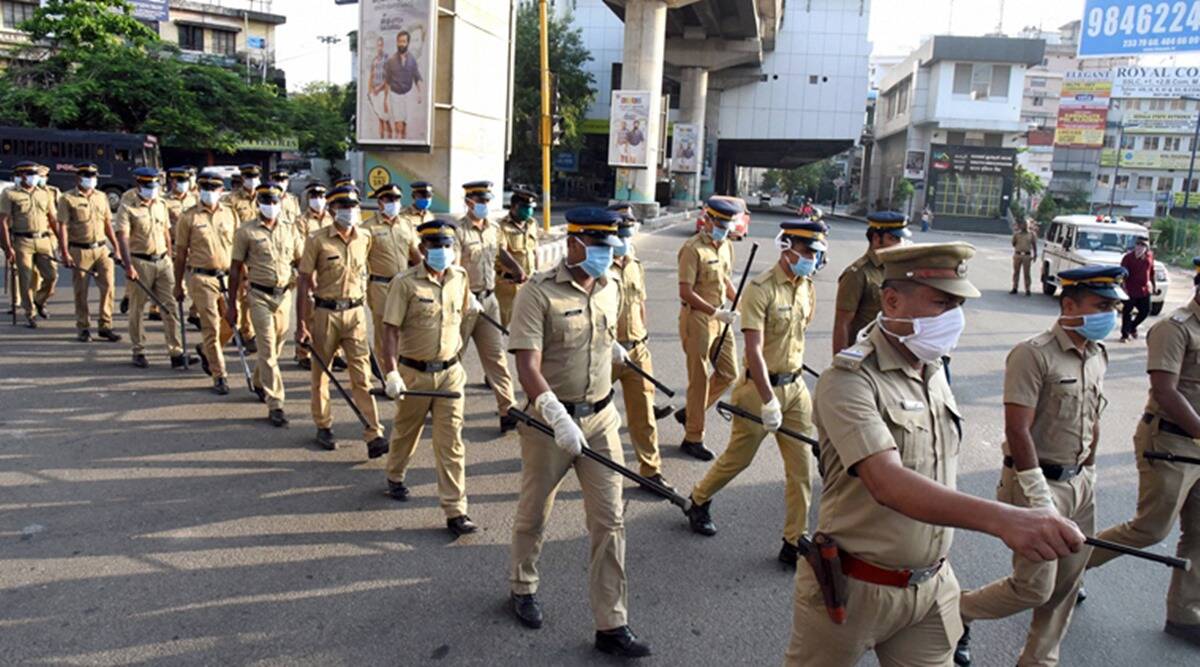On 26th March 2021, after months-long protests against police brutality, the city of New York, passed a law to end qualified immunity for the New York police department. In simple words, previously, qualified immunity for the officers made it extremely difficult for citizens to hold police officials accountable for their actions, even when such actions led to the death of innocent citizens and the destruction of property. While this is truly a historic moment for the United States, it immediately threw into sharp contrast the lack of any police reforms back here in India.
Overview of police brutality in India:
The unprovoked assault on migrant labourers heading home during the lockdown, unprovoked assault on people out to buy essential groceries, coustodial torture and death of two shopkeepers in Chennai etc. are among many such instances. As per a report, around 1739 individuals died in police custody in the year 2019. A simple Google search for “Police brutality in India” would yield enough hits to almost cover the extent of the problem. Almost, because we have to assume at least some cases go unreported. While it was one death which finally broke the proverbial camel’s back and led to massive protests for police reforms in the US of A, both custodial deaths and encounter killings are quite common in India, the latter being cheered on as “justice” by the mobs.
As the states entered into a second phase of lockdowns to tackle the Covid virus, similar horror stories have reemerged.
The Institutional Problem:
The British administration, following the 1857 mutiny, had enacted the Police Act, 1861 in order to support the executive and political interests of the British empire. The original police force was designed to suppress any dissent. Surprisingly, or perhaps not some much in hindsight, the government of independent India continued to adopt an adversarial stance against citizen’s right to dissent using the Police Act and other supplementary legal instruments.
Since independence, no central or state government has sincerely taken a firm stand on police reforms or tried to replace colonial laws that do not conform with India’s democratic and argumentative identity. Even as some states have enacted their own legislations they closely resemble the colonial framework and thus make the police complicit in suppressing dissent. In India, states have power of superintendence and control over the Police. However more often than not, the state political executive uses this power for political or personal reasons instead of ensuring transparency and accountability. There is a current interdependence between elected politicians and police officials which create a quid-pro-quo arrangement between the two. Such a relationship reduces the police to a mere agent of the elected government, which is often used to enforce its political will and target opposition and dissenters.
The Incentive Problem:
Not quite unlike the concept of “qualified immunity”, in India all public officials have “sovereign immunity”. Sections 132 and 197 of the Code of Criminal Procedure 1973 prohibit the prosecution of certain categories of public officials, including any police officer, without the prior sanction of the state government. In simple words, if a state government orders the police to lathi charge and disperse a protest, and the police, while lathi charging, kills a bystander/protestor, the police official cannot be held liable unless the same government which ordered him to lathi charge the crowd decides to allow him to be punished.
In the case of the police, such a protection is designed to protect officers from vexatious and frivolous claims filed against them in criminal courts. In its 8th Report in 1981, the National Police Commission noted the inefficacy of this protection for police officers and recommended that it be repealed. A 2009 report from Human Rights Watch entitled ‘Broken System: Dysfunction, Abuse, and Impunity in the Indian Police’, also recommended that the Indian parliament repeal Section 197 or, alternatively, retain the provision but delineate the boundaries of what constituted ‘official duty’.
Apart from the National Police Commission (1981), the Ribeiro Committee (1998), the Padmanabhaiah Committee (2000), and the Malimath Committee (2002-03) had made further reports and recommendations on police reforms which were mostly disregarded over the years. The Ministry of Home Affairs had set up an Expert Committee to draft a new Model Police Act in September 2005. The Committee had submitted a model Police Act on 30th October 2006.
In 2006, the Supreme Court of India, in the case of Prakash Singh and Others vs Union of India (Writ Petition (Civil) No.310 of 1996) ordered directives on police reform, but the central and state governments either never complied at all or only partially made efforts in that direction.
Another important aspect to be understood is that an overwhelming majority of the police force consists of “constables”. The entry requirements for the post in most states is between 12 pass to graduation. These constables are the primary investigation and outreach for the police. Irrespective of their performance, the only promotion available to them is a “Head Constable”. Considering that they are under equipped (most police forces in India have nothing better than a lathi), under-staffed (there is a backlog of cases in virtually every police station), and undertrained (in terms of effective policing, use of technology, and knowledge of latest laws) it is virtually no surprise that the set up is currently poor.
As the saying goes, if you give a man a hammer, everything looks like a nail. In India, our solution to any problem is to give an undertrained man a lathi. Every problem is bound to look like one which can be solved by beating someone. This is not due to any individuals, but due to how the entire incentive structure of the system is set up.
That is, the existing police machinery in India is designed to control citizens, not to protect them. It has resulted in the subversion of the rule of law and obstructed the growth of service-oriented policing. The repercussions of not having an effective police setup are widespread. It ranges from false convictions of minorities to demands of bribery from poor vendors, to horrible law and order leading to low prosecution and conviction rates, further leading to an unsafe societal environment which in turn impacts both personal liberty and economic choices.
This problem, unfortunately, cannot be solved overnight and requires wide-ranging policy intervention at both the State and Central levels. This includes, but is not limited to, an independent body devoid of political influence enforcing accountability and police training, if we wish to have a police force that functions as an agency that protects the life, liberty, and property of every citizen, even dissenting ones, and upholds the rule of law in the country.
Read more: Bitcoin & NFTs: Opportunities or Ponzi schemes?
Post Disclaimer
The opinions expressed in this essay are those of the authors. They do not purport to reflect the opinions or views of CCS.






